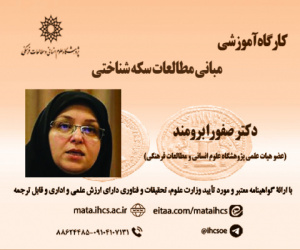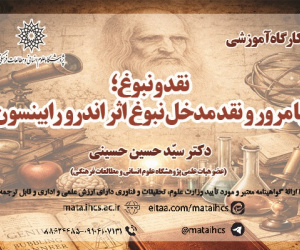رابطه فرهنگ و باروری در ایران (مقاله علمی وزارت علوم)
درجه علمی: نشریه علمی (وزارت علوم)
آرشیو
چکیده
کشور ایران در چند دهه اخیر با روند تند کاهش باروری مواجه بوده است. کاهش باروری را می توان با تغییر در ساختار نگرشی افراد مرتبط دانست، به عبارتی فرهنگ، عناصر و ساختارهای فرهنگی بر فرآیند باروری در کشور ایران تاثیر گذار بوده اند. فرهنگ دارای سه مولفه مهم شامل: 1) ابعاد شناختی( ارزش ها و نگرش ها) ؛ 2) ابعاد سازمانی ( هنجارها و قوانین فرهنگی) ؛ 3) ابعاد مادی ( نمادهای فرهنگی) می باشد. هدف مقاله حاضر بررسی تاثیر مولفه های مهم فرهنگی شامل مولفه های شناختی، هنجاری و نمادی بر رفتار باروری در کشور ایران است. در راستای نیل به اهداف فوق، پس از طراحی پرسشنامه خبره ، با بیست نفر از خبره ها مصاحبه و نتایج حاصل از این فرآیند با استفاده از روش تحلیل سلسله مراتبی مورد تجزیه و تحلیل قرار گرفت. نتایج حاصل از خروجی نرم افزار اکسپرت چویس نشان داد مولفه شناختی فرهنگ به عبارتی شاخص تغییر در ارزشها و نگرشها مهم ترین مولفه فرهنگی و نحوه تقسیم کار جنسیتی در منزل، نگرش های جنسیتی مساوات طلبانه، تاثیر رسانه های مدرن و سیاستهای دولتی مهمترین زیر شاخص های فرهنگی تاثیرگذار بر رفتار باروری از دیدگاه خبرگان معرفی شده اند. در زمینه اجرایی شدن سیاست های افزایش باروری باید توجه داشت که فقط اعمال برنامه اقتصادی نمی تواند به تنهایی تاثیر گذاری قابل توجه ای در افزایش باروری داشته باشد، از اینرو پیشنهاد می شود در بسته های حمایتی خانواده بعد ارزشی، فرهنگی هم به درستی مورد توجه قرار گرفته و در برنامه های حمایتی خانواده گنجانده شوند.The relationship between culture and fertility in Iran
Family is the most important social institution in society, serving as the core unit for providing emotional, spiritual, and safe environments for living, interaction, support, and caregiving among its members in the face of various challenges. Amid ongoing family transformations in Iran, behaviors, desires, and intentions regarding childbirth have also undergone significant changes. Studies on the level and trends of fertility in Iran indicate a sharp decline over recent decades. Changes in fertility components can be attributed to shifts in individuals’ cognitive, attitudinal, and psychological structures. Therefore, culture, along with its elements and structures, significantly influences the fertility process in Iran (Shafaed-Din & Cheraghi Kootiani, 2014). Culture affects human behavior and shapes fertility behavior through three pathways: values and attitudes, cultural norms and laws, and cultural symbols. This article, based on Koeun’s framework-which conceptualizes culture as comprising three components (cognitive, organizational, and symbolic)-examines the influence of these dimensions on women’s fertility behavior. Drawing on expert opinions, particularly those with research experience in this field, can be highly beneficial in identifying and prioritizing cultural factors that influence fertility, especially in the current context where increasing fertility is a pressing concern for Iranian society. The Analytical Hierarchy Process (AHP), developed by Thomas L. Saaty in 1980, is a robust and flexible decision-making technique used to evaluate complex issues across multiple levels. It integrates both objective and subjective assessments through pairwise comparisons and helps analysts organize key aspects of a problem within a hierarchical structure. In this study, the opinions of 20 experts were utilized, most of whom were university professors and scholars specializing in anthropology, sociology, and demography. In addition, experts with specific knowledge of fertility and those involved in policy-making were consulted. To identify and determine the indicators, both a literature review and expert insights were employed. Furthermore, to refine these indicators, feedback from ten additional experts was incorporated. After finalizing the indicators, a pairwise comparison questionnaire was developed. This study investigates the impact of the three cultural dimensions on women’s fertility behavior. To achieve this goal, and based on expert input, an appropriate questionnaire was designed and interviews were conducted with knowledgeable individuals. The questionnaire was developed based on the literature and a theoretical framework that considered various theories explaining the cultural dimensions (cognitive, organizational, and symbolic) and their relation to fertility. The questionnaire included four main indicators-values and attitudes, cultural norms and laws, cultural symbols, and ethnicity-and 16 sub-indicators. It was completed by 20 academic experts and policymakers involved in demographic issues. The results, analyzed using Expert Choice software (version 11), revealed that the “values and attitudes” indicator had the highest weight (0.309), making it the most influential cultural factor affecting fertility behavior. It was followed by “cultural symbols” (0.304), “norms and laws” (0.233), and “ethnicity” (0.155). Based on these results, key strategies are proposed to curb the steep decline in fertility and promote higher fertility rates in Iran. The primary focus should be on transforming societal values and attitudes, particularly concerning gender role division and the promotion of egalitarian perspectives, which ranked highest among cultural factors. Although women’s employment and education levels have risen, they do not constitute the primary barriers to fertility, as women are actively participating in both spheres. However, the conflict between family responsibilities and professional duties, the pressure of multiple roles, cultural expectations, and the lack of supportive policies must all be addressed. It is recommended that independent governmental agencies be established to implement measures such as providing paternity leave during childbirth, offering affordable and trusted childcare facilities at workplaces, and granting additional wages or benefits for domestic helpers to assist with household tasks at least once a month. Changing cultural attitudes takes time, but media can play a pivotal role in normalizing gender equality and shared household responsibilities. Ultimately, effective fertility-promoting policies should be comprehensive, integrating both economic and cultural dimensions.









